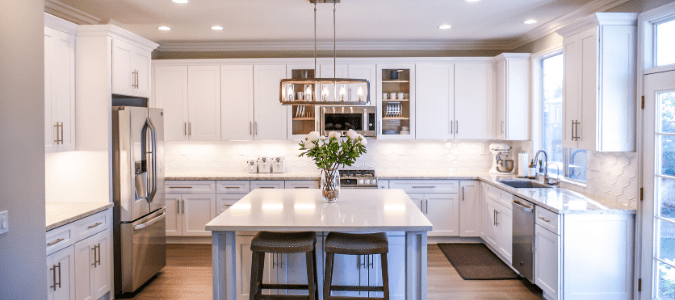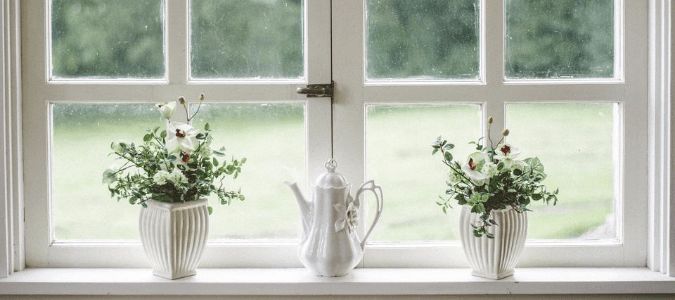The thought of having termites on your property is alarming. After all, these pests are extremely destructive. So, what are the signs of termites, and how can you catch these earlier, rather than later?
It starts with knowing the different kinds of termites you may find on your property. In the United States, there are three main varieties of termites: the subterranean termite, the drywood termite and the dampwood termite. It’s unlikely you’ll find dampwood termites on your property, as this species prefers wet, decaying wood and must maintain close contact with water. Typically, dampwood termites are found in subtropical woodlands or mangrove forests—probably not the environment homeowners in the United States have in their backyard.
If there are termites on your property, they are most likely either drywood termites or subterranean termites. The names of these termites give you some information about where you might find them. Drywood termites prefer to nest in dry wood and usually above ground level. These species don’t need contact with soil because they extract moisture from the wood they feed on. On the other hand, subterranean termites require moisture to stay alive and they find food sources by building underground tunnels until they find something to their liking, such as the foundation of a home.
Collectively, termites cause billions of dollars’ worth of damage to homes every year and are the biggest threat to what is likely your largest investment: your home. The species that are of the biggest concern to homeowners are the subterranean varieties. It’s not always easy to spot an infestation in your home when it first begins, but there are some basic signs you can look out for that can indicate termites are living on your property. According to Alan Brown, Board Certified Entomologist and Technical Director at ABC Home & Commercial Services, signs of termites in your house include:
- Dead termites or termite wings
- Blistered paint or damaged wood
- Mud tubes
- Kick out holes and piles of termite frass
Dead Termites or Termite Wings
Finding dead termites or parts of termites is often the first sign of both subterranean and drywood termite infestations. When people think of termites, they often picture a small bug with wings—something that looks like an ant that can fly. However, not all termites have wings, and there are many different types of these destructive insects.
In fact, only adult reproductive termites—also known as “swarmers”—have wings. What do termites look like? As you can see in the image above, swarmers are a little less than half an inch long, and they have two sets of nearly-identical wings that are translucent. Wingless termites include “soldiers,” which are non-reproductive adults that have larger heads with protruding mandibles. These types of termites are responsible for protecting their colony, as the name suggests. Smaller termites—which are also wingless—are typically the workers that build tunnels for the colony.
Homeowners often find the wings of swarming termites on windowsills, in spider webs or near indoor lights. If you find wings that termites have shed, it is usually a sign of an established colony. Even if you find flying termites or their wings outside, it might indicate that there is a problem in your home or inside of another nearby structure.
Damaged Wood
Finding damaged wood is another one of the best indications that you either have a current termite issue or that your home experienced a termite infestation in the past. If you find damaged wood in an area with harder wood and you find smooth, almost sculptured holes, this can indicate the presence of drywood termites. However, if the damaged wood is near a moist area and the damage is along the grain of the wood, you may have subterranean termites.
If you don’t see damaged wood, but you believe you have termites, there is a way to test whether your wood is in fact damaged. Try lightly tapping the surface with a hammer or screwdriver. If the wood makes a hollow or dull sound, termites may have been responsible. Similarly, if the wood is soft or easily broken, then you might have a termite infestation.
However, it’s difficult to know for sure without examining the interior of the wood with a sharp instrument. If you find mud tubes, termite holes or other damage inside the wood, it’s likely that you have a termite problem.
Mud Tubes
A good way to think about mud tubes is that they are essentially subterranean termite highways. These passageways are only about the width of a pencil and are made from wood particles, soil and termite feces. Termites might build these tubes inside walls, in the foundation, along exterior walls, in siding or the ceiling. In some cases, you might be able to spot the mud tubes themselves. In other cases, you’ll likely first see signs of these tubes, such as uneven or bubbling paint. Older mud tubes usually dry out and crumble, often leaving behind “etching” on the surfaces of your house.
Kick Out Holes
If drywood termites are present in your home, you may find termite exit holes, which are also known as kick-out holes. These are created as drywood termites chew through wood. Drywood termites create these holes so termite swarmers can leave the nest and start a new colony. You may also find piles of what looks like sawdust near these kick-out holes. This sawdust-looking material is actually termite frass, or feces, that the termites push through these exit holes.
The best course of action after seeing signs of what could be a termite problem is to contact a pest control specialist. An experienced professional can conduct a complete inspection and provide you with a written report detailing the results. A technician can also help explain your options and work with you to create a pest control plan that will be the most effective.
When faced with a termite infestation, many homeowners wonder what went wrong. If you find yourself in this situation, you may ask yourself: What could have attracted these pests, and where did they come from?

Where Do Termites Come From?
Termites are found in nearly every state in the United States. While they are often more prevalent in coastal areas, these destructive insects have managed to spread to other areas too. This happens when vegetation, such as wood or mulch, that has termites living in it is transported from one area to another. In fact, one species of subterranean termite called Formosan subterranean termites is an invasive species. These pests are believed to have made their way to the United States from either Taiwan or southern China in the 1960s. Unfortunately, Formosan subterranean termites are among the most destructive and the most widespread species of termite worldwide.
If you’re dealing with a termite problem, or suspect you might be, you’re probably also wondering how these termites found their way to your home. Once a termite colony has reached maturity, swarmers—or reproductive adult termites—begin to leave their colonies to find a mate and start a new colony somewhere close by. This swarm usually happens around spring and early summer months. The exact timing can vary from year to year because of environmental factors like moisture, heat and the changing length of days.
When searching for a place to nest, these swarming termites are most attracted to food sources. Subterranean swarmers are also attracted to sources of moisture, which might include moist environments around homes, including areas around air conditioning leaks, poorly maintained plumbing, leaky roofs or defective gutters.
Homeowners can take some initial steps to try to keep termites out of their house. But, if you try to treat what appears to be a possible infestation on your own, particularly when you are dealing with subterranean termites, which can have colonies with up to a million members, you might end up prolonging the problem. Because of this, it’s essential to work with a pest control specialist who understands the measures that are needed to not only address your current termite issues but who can also help prevent pest problems in the future as well.

How To Keep Termites Away
There are several preventative measures homeowners can take to reduce the likelihood of future termite infestations, such as:
Eliminating Wood and Vegetation Near Your Home’s Exterior
Subterranean termite problems often develop in situations where termites have easy access to soil, wood and moisture. To prevent termite problems, move any firewood or vegetation that is up against your home at least six feet away. If possible keep firewood lifted off the ground. Additionally, because termites like mulch, keep mulch six feet away from your home’s exterior. For drywood termites, be sure to keep your trees maintained and don’t let branches grow close to your home. This gives termites, as well as other pests, easy access to your roof.
Reducing Moisture Around Your Property
Subterranean termites need moisture to survive and are more likely to infest a home if they can find water sources nearby. To protect your home from termites, make sure your gutters and downspouts funnel water away from your home’s foundation, and that the ground near the foundation is sloped so any surface water drains away. Also, be sure to repair any leaky faucets or pipes that could lead to pooling water. Speak with a lawn care professional about the best watering schedule for your lawn so water doesn’t sit on your lawn’s surface.
Reducing Moisture and Humidity in Crawl Spaces
You can do this yourself by making sure vents aren’t blocked by vegetation. Pest control professionals can install further measures that reduce moisture and humidity in your crawl spaces.
Contacting a Professional
Professionals use scientifically proven methods of termite control and can usually provide ongoing management for you. These licensed experts can catch signs of termite activity you may have missed and can help protect your biggest investment.
Overall, while you can take small steps to prevent termite infestation, ultimately, the best way to keep these pests away is through professional services, such as regular inspections and preventative pest control. Whether you are building a new home or trying to preserve a house that has been in your family for years, termite control specialists can help protect your home for many years to come.
ABC Can Protect Your Home From Termites
As we already mentioned, termites are responsible for costing homeowners billions in property damage each year. If you suspect there are termites living on your property, ABC Home & Commercial Services can help. We use scientifically proven methods of termite control to ensure that we eliminate the entire colony. Additionally, we offer ongoing pest management programs to ensure that you are protected from any type of unwanted bugs or critters on your property.
